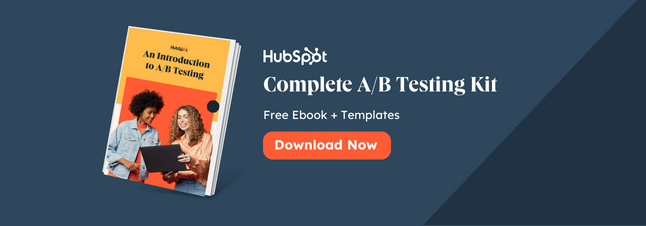What Most Brands Miss With User Testing (That Costs Them Conversions)
I’m an inclusive marketing consultant and the founder of Thompson Media Group. A former client of mine recently forwarded me an email he’d received from a market insights company he’s subscribed to. The insights the company had included in...

I’m an inclusive marketing consultant and the founder of Thompson Media Group. A former client of mine recently forwarded me an email he’d received from a market insights company he’s subscribed to. The insights the company had included in this particular email was about "The Top 5 Ranked TV Sitcoms in U.S. History" according to consumers. My client’s message to me was one of disbelief at the results, writing, "According to who?". He couldn’t believe a representative base of respondents came up with the very homogenous top 5 list. For my client, his questioning the results presented in the email caused friction in his mind. That friction resulted in him doubting the methodology and as a result the credibility of the company sending the email. Like that company, a lot of brands have unnecessary friction in the customer experiences they deliver. That friction negatively impacts those brands’ conversions. Brands don’t talk to enough different types of people. As a result, if consumers don’t fit into what is considered to be "mainstream" or "normal," their experiences aren’t sufficiently reflected or considered in the products, services, and experiences brands deliver. Friction-filled experiences can make consumers from underrepresented communities hesitate and ultimately decide not to choose the brands they were once considering. I’ve seen this happen in user testing quite a bit. Brands will take the time to observe how their ideal consumers receive their product, their website, or their sales pages. But because they don’t focus on recruiting people with different identities, they miss out on the opportunity to understand the unique ways consumers with different identities go about making decisions. I always like to remind my clients — your customer base is more diverse than you think. Just because you may focus your energy on defining who you serve based upon psychographics and specific qualifying criteria, doesn’t mean they don’t have a variety of identities that influence what they do and don’t purchase. For instance, my husband, who is a Spanish speaker, chose his mobile phone company purely based on the fact that the guy who works in the local store closest to our house, speaks Spanish. That wasn’t the case for the competitor with the store across the street. For him, it was better to choose an option where he knows he can seamlessly get his needs met in person, in the language he prefers. In this instance, my husband’s identity as a Spanish speaker was the primary factor in his user experience, and ultimately his purchase decision. Below are some common ways the people you want to serve are different. As you design and gather feedback on the products, services, and experiences you deliver, it's helpful to keep these differences, and the corresponding identities and communities connected to them, in mind. Remember, when consumers are considering your brand as a solution to their problem, they are often looking to answer this important question: do people like me achieve success here? As I’ve worked with brands of all sizes across industries to grow bigger and more diverse customer bases over the years, one thing that has always been clear is that people with identities from underrepresented and underserved communities experience friction at higher rates than other consumers. Here are a few examples of friction consumers shared with me during user testing sessions on various brands’ website and social media channels: In some of these cases, the brands had already done the work of making sure they were serving the needs of people from underrepresented and underserved communities. But those experiences were friction-filled, which made it harder for the consumer to take the next step forward with the brand, which diminished their conversions. User testing that specifically incorporated people with these identities would have helped the brand identify ways to eliminate the friction these consumers experienced. In this episode of the Inclusion & Marketing podcast, I cover more in-depth ways brands can go about being inclusive with their conversion rate optimization efforts such as leaning into relatability with your messaging: As you’re working to increase your conversion rates, it’s helpful to have a solid understanding of what’s at the heart of the friction your audience is experiencing with your brand. User testing isn’t the place to learn all the cultural intelligence and insights needed about your ideal customers who are part of underrepresented and underserved communities. Instead, during inclusive user testing with a broader customer base, aim to implement what you know about your customers without creating any unnecessary friction for them. When I do user testing, I recommend that clients focus on asking people to go through the website the same way they always would when gathering information, then talking me through their choices as they go. And as you’re talking to different consumers, focus on getting answers to these two questions. Different people have different needs based on their identity. And as consumers from underrepresented and underserved communities are going through your customer experience, it‘s helpful to understand the process and key questions they look for. They’re often looking for answers that let them know, "This brand is for people like me." Common factors that impact decision-making to a higher degree for people from marginalized communities include: For instance, I follow a gluten-free diet for health reasons. As such "availability" of food I can safely eat (and actually want to eat), is high on my priority list when choosing a restaurant. My need to know there are food options for me is higher due to my identity than it is for someone without any dietary restrictions. As such, user testing will reflect my elevated need to find this information easily on a restaurant’s website. In this video, a Black gay man walked me through his experience on an ice cream brand’s website. In this interaction, I learned how important it was for him to know if the brand shared his values, and shared them in an easily accessible way. I did another session with a Black woman for a beauty brand, and she immediately expressed her excitement when she saw that the retailer had highlighted "Black-owned brands." Once you know the questions these consumers are looking to have answered, you can identify how to ensure you are giving them what they need in a manner that delivers the least amount of friction. If you do user testing with a general population, you often won’t uncover any points of friction that are specific to an underrepresented and underserved community or identity. That’s why it is important to include people with different identities in your user testing. Then you can identify if there are specific things about their identity that aren't being served well with the experiences your brand delivers. For instance, I’ve talked to and have conducted user testing with people who are part of the LGBTQ+ community. They shared with me the friction they experienced when coming across a form like this one that wasn’t gender inclusive. Another great example, from this episode of the Inclusion & Marketing podcast, where I chatted with three neurodivergent consumers. They shared their experiences, preferences, and major friction points when shopping both in stores and online. I did some user testing with a woman who is hearing impaired. She told me that because of her disability, she often experienced friction when looking for online learning resources for her business. This is because a lot of the time the brands didn’t have any accessibility information listed on their websites or sales pages. If you want to find out more about some of these friction points before you even get to user testing, it’s a good practice to incorporate talking to a broad cross-section of your customers into your marketing workflow. On this episode of the Inclusion & Marketing podcast, I cover how to do this more in-depth, including how to infuse what you learn into your work. Where possible, dig into customer data to uncover the identities of the people who are coming to you to solve their problems. Then, be sure to recruit people who have those identities into your sample any time you engage in user testing. You’ll do that by identifying ways to quickly and intuitively demonstrate that people with the identities you’ve chosen to serve do indeed belong with you. Make what you’ve already created work harder for you. Optimize your conversions by engaging in user testing with a broader diversity of your ideal customers. When you work to cut out the friction consumers experience, particularly as a result of their identity, you’ll make more of the people who engage with your brand feel like they belong with you. That sense of belonging will lead to higher conversions.
Why Brands Struggle to Improve Their Conversion Rates

How to Get Identity-Based Insights in User Testing That Improve Conversions
Is there anything different about their decision-making process that’s based on their identity?
Are there any friction points that are identity-specific?

How to Get Started With Inclusive User Testing
1. Get dialed in on who your customer is.
2. Focus on the identities you want to ensure feel like they belong with your brand.
3. Eliminate friction that already exists in the customer experience you deliver.
It’s Time to Increase Your Brand’s Conversions

 Tfoso
Tfoso 










_80.jpg)












![Run An Ecommerce SEO Audit in 4 Stages [+ Free Workbook]](https://api.backlinko.com/app/uploads/2025/06/ecommerce-seo-audit-featured-image.png)










